These 10 Animated Films Are Not For Kids, And That's Why We Love Them

These films aren't made for Saturday morning cartoon sessions.
1. "Waltz with Bashir" (2008)
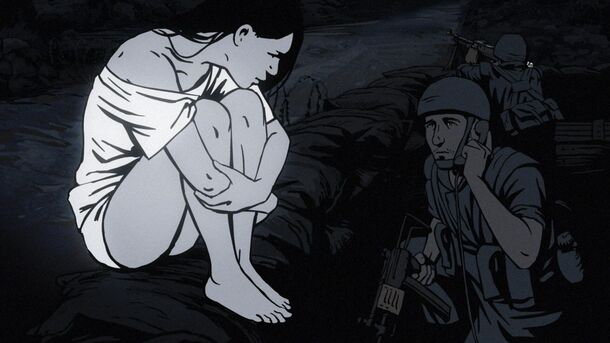
A stirring Israeli war documentary, "Waltz with Bashir" is an emotionally loaded animated tour-de-force. This film follows director Ari Folman, who encounters an old friend suffering from recurring nightmares of the 1982 Lebanon War. Following this, Folman realizes he can't remember anything from that period, setting him on a journey to uncover the truth.
"Waltz with Bashir" is an unforgettable ride that pulls no punches in its exploration of memory and war. It's as far from a kid's movie as you can get, with a Certified Fresh rating of 96% on Rotten Tomatoes, speaking volumes about its acclaim.
2. "Persepolis" (2007)
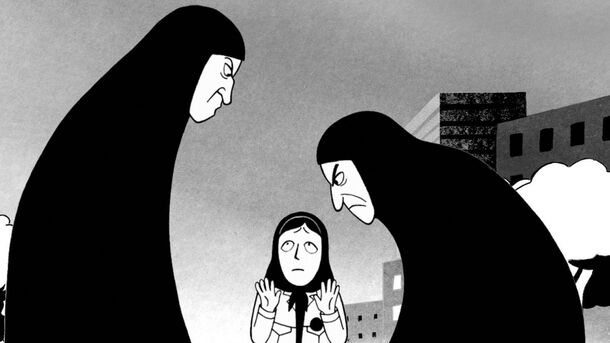
This French-Iranian animated biographical film, based on Marjane Satrapi's autobiographical graphic novel of the same name, tells the tale of a young girl coming of age during the Islamic Revolution.
The film delivers a poignant, emotionally charged story about identity, rebellion, and the high cost of freedom. Nominated for an Academy Award for Best Animated Feature, "Persepolis" holds a Rotten Tomatoes score of 96%.
3. "The Plague Dogs" (1982)
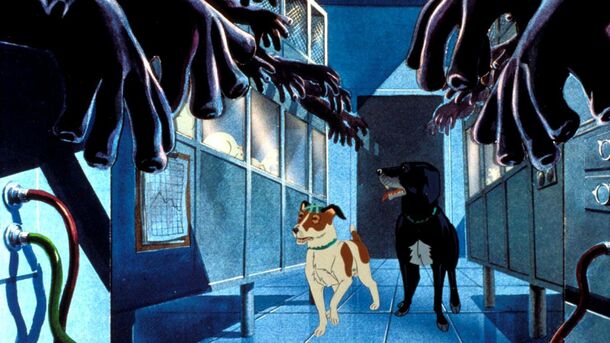
From the director of "Watership Down," this British animation is equally heart-wrenching. "The Plague Dogs" is the story of two dogs, Snitter and Rowf, who escape an animal testing facility only to be pursued across the harsh English countryside, marked as carriers of the bubonic plague.
Their tragic journey, drawn from the pages of Richard Adams' novel, is not an easy watch – so much that it's practically guaranteed you won't ever re-watch it.
4. "Waking Life" (2001)
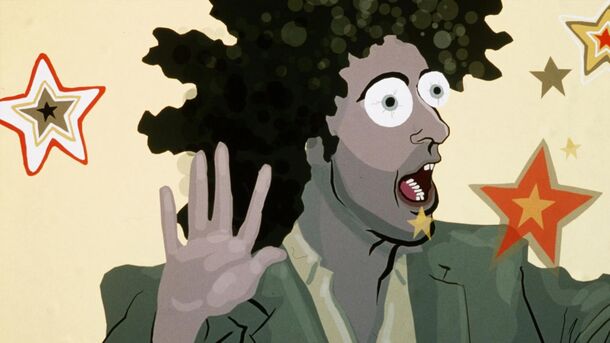
From director Richard Linklater, "Waking Life" is a dream... literally. Using rotoscope animation to give the film a surreal, dream-like quality, it explores philosophical concepts like existentialism and the nature of dreams through a series of vignettes.
This is an animated film that isn't just R-rated; it also demands a level of intellectual engagement that most children's films wouldn't dare to approach.
5. "A Scanner Darkly" (2006)
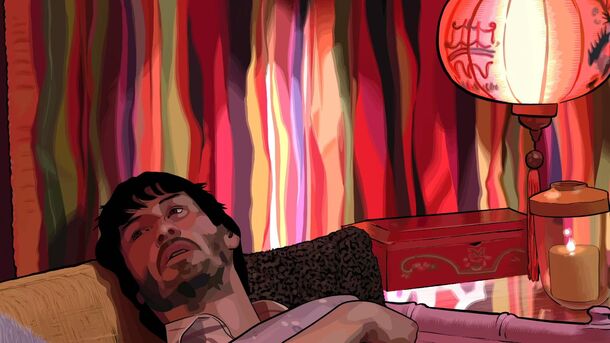
"A Scanner Darkly" is yet another entry from director Richard Linklater, but this time it's a deep dive into a drug-fueled dystopian future. Based on the novel by Philip K. Dick, the film employs the same rotoscope animation style seen in "Waking Life," resulting in a unique, almost hallucinogenic visual experience.
Keanu Reeves stars as Bob Arctor, an undercover agent in a future where the United States lost the war on drugs. Arctor becomes a victim of the highly addictive and reality-altering drug, Substance D, which he was assigned to help fight against.
6. "Heavy Metal" (1981)
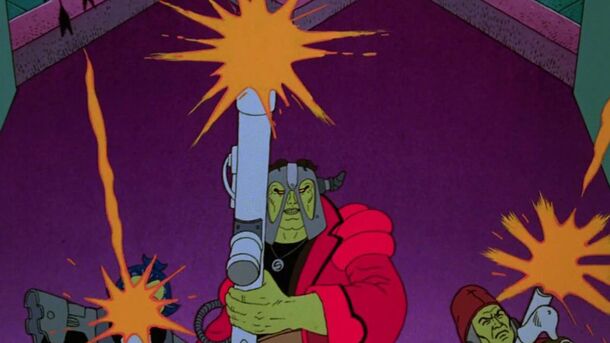
Strewn across the space-time continuum, "Heavy Metal" is an anthology film that pushes animation into the realm of the mature and otherworldly.
The movie is an adaptation of stories from the iconic "Heavy Metal" magazine, a publication known for its blend of dark fantasy and science fiction. Its stories range from a dystopian New York City, an alien spacecraft carrying a malevolent force, to a post-apocalyptic Earth.
The film features a unique blend of celebrity voice talents including John Candy, Eugene Levy, and Harold Ramis.
7. "Animal Farm" (1954)
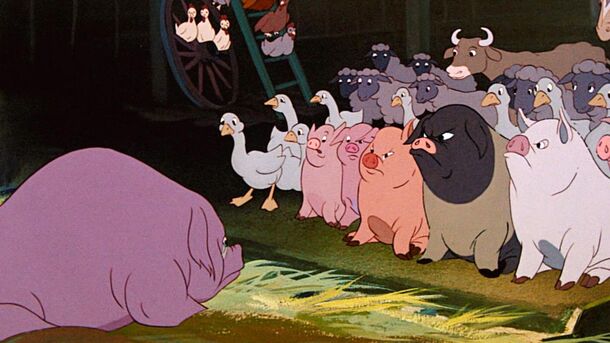
A film adaptation of George Orwell's allegorical novella, "Animal Farm" might appear kid-friendly at first glance with its talking animals. But don't be fooled.
The film serves as a biting critique of totalitarianism, mirroring the events of the Russian Revolution and the subsequent rise of the Soviet Union. While it may not have the glitz and glam of modern animated features, its socio-political commentary and enduring relevance make it a must-watch for adults, especially in a grim reality of 2023.
8. "Grave of the Fireflies" (1988)
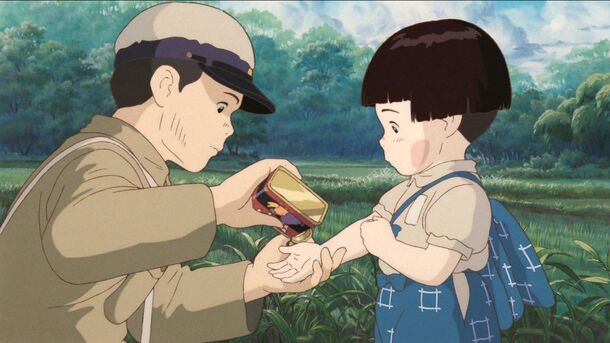
Studio Ghibli has a reputation for kid-friendly films, but "Grave of the Fireflies" is a far cry from the fantastical worlds of "Spirited Away" or "My Neighbor Totoro".
Set in Japan during World War II, the film follows two siblings struggling to survive in the aftermath of the Kobe firebombing. It's a heartbreaking story of innocence lost amidst the horrors of war. Despite the grim subject matter, the film managed to garner critical acclaim, holding a 100% rating on Rotten Tomatoes.
9. "When the Wind Blows" (1986)
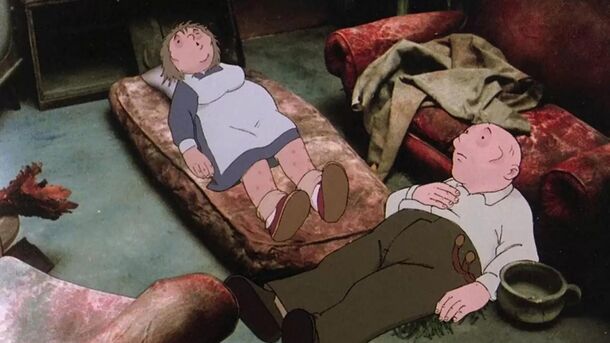
This British film blends traditional animation and stop-motion to tell a haunting tale of a naive elderly couple preparing for a nuclear war. Based on Raymond Briggs' graphic novel, "When the Wind Blows" is a chilling depiction of the horrifying aftermath of a nuclear bomb, as the couple slowly succumb to radiation poisoning.
The narrative is a slow, agonizing march towards the inevitable, underpinned by the couple's enduring innocence and optimism. Despite the pretty emotionally dark storyline, the film manages to incorporate elements of British humor, creating a tragicomic atmosphere.
10. "Mary and Max" (2009)
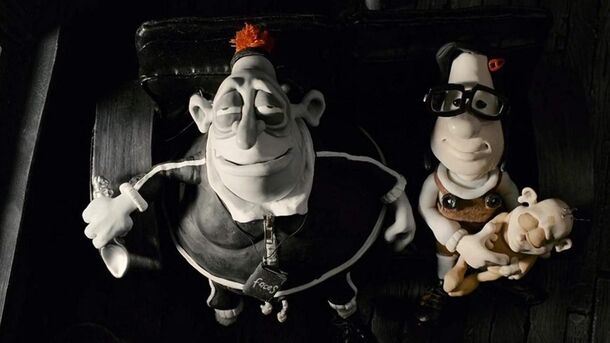
"Mary and Max" is a stop-motion film that explores a pen-pal friendship between two unlikely individuals: Mary, a lonely little girl living in the suburbs of Melbourne, and Max, a forty-four-year-old Jewish man with Asperger's Syndrome living in New York City.
While it might sound a little problematic, the film explores themes of loneliness, friendship, mental health, and the simple human need for connection.